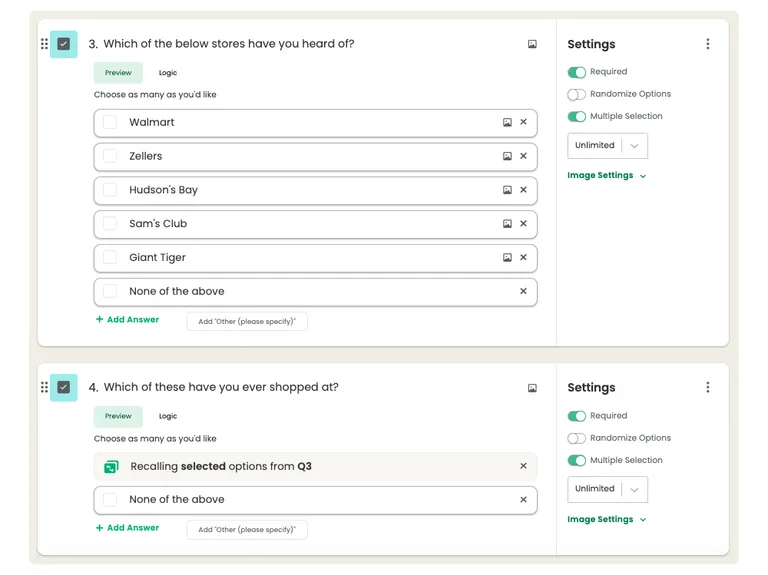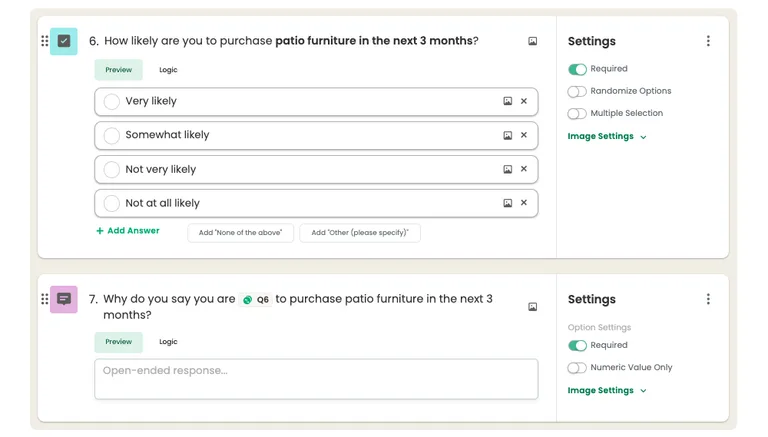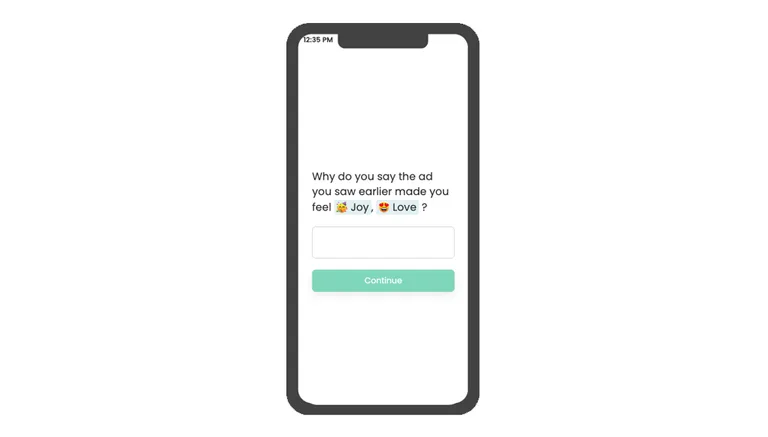Using piping in survey questions and answers can ensure a better experience for the survey taker and also help you get higher-quality data. In this article, we outline some tips for using piping in survey creation.
What is question and answer piping?
Piping is a technique used in surveys that helps echo a respondent’s answers back to them. The significance of piping is in the name – it pipes answers from one question into another, connecting them for the benefit of the respondent and the person analyzing the data. Question and answer piping specifically uses the survey taker’s answer and frames it like a question to gain a deeper understanding.
Have a look at this example to understand what piping is.

If a person chose Green in question 1, they would be asked why they like the color green in the follow-up question.
Best practices for using piping
1. Leverage question and answer piping to customize answer lists.
Question and answer piping is often used to customize survey questions and answer lists by showing respondents relevant answer options based on their previous responses.
For example, Question 1 below is about retailer awareness, and Question 2 is about shopping history at those same retailers. We can logically assume that consumers probably have not shopped at a store they said they’ve never heard of. So Q2 answer options will be a respondent’s answers from Q1, as well as “None of the above.”

In a survey, the questions will look like this:
On Upsiide, you can easily pipe in answer choices by using the @ symbol in the answer field and selecting the question you would like to reference. You can also pipe unselected choices to gather more information on items that respondents reject.
2. Use question and answer piping when asking an open-ended question.
Piping can be used to probe something that a respondent said earlier. For example, you can ask a clarifying question to understand why the person chose that answer in the previous question.

You can also pipe in multiple answers.
For example:

3. Use question and answer piping to customize question text.
In some cases, it’s important to keep the respondent focused on a topic. Here, it can be helpful to use piping to keep the question text relevant to them. For example, asking if people would purchase an item for their child of a certain age:

To sum up on piping
Using question and answer piping in surveys is best practice because it makes each question as relevant to the respondent as possible. This, in turn, produces the highest quality data.. By customizing answer lists, probing with open-ended questions, and customizing question text, you can get more relevant information from your respondents and make their survey experience more engaging.
Speaking of “engaging,” our recent article explains how to write compelling survey questions. Check it out now if you want to keep your respondents engaged and get the insights you need!


